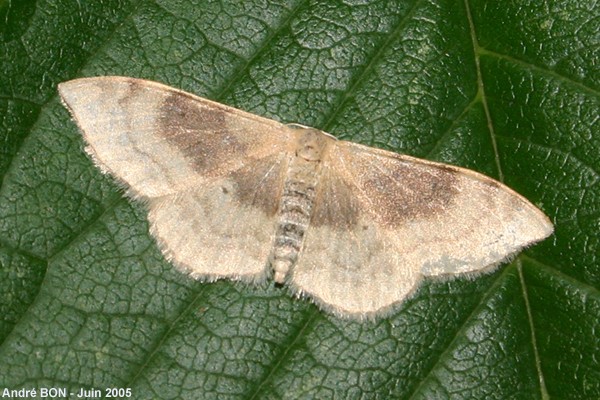
| Portland Riband Wave (Idaea degeneraria (Hübner, 1799)) |

|
|
Scientific name: Idaea degeneraria (Hübner, 1799) Common name: Portland Riband Wave French name: Acidalie dégénérée Order: Lepidoptera Suborder: Heterocera Family: Geometridae Subfamily: Sterrhinae Wingspan: 19-26 mm Biotope: Track sides, fallow lands, scrubs. Geographic area: Southern Europe east to central Asia. Flight time: May to June, then July to September. Number of generations : 2 Caterpillar: Ochreous with brown or russet markings, cross-shaped markings on middle segments. Host plant: Brambles (Rubus), Knotweeds (Polygonum), Scabious (Scabiosa), Bindweeds (Convolvulus), Stachys, etc. |
The Portland Riband Wave bears a dark brown band, on each wing, between the antemedian and medina lines. The wings are a very pale beige colour starting from the median area. The basal area is a slightly darker intermediate colour. The submarginal line is thickened next to the costal edge. The black discal spots are clearly marked on the four wings. The Least Riband Wave (Idaea rubraria) shows a more strongly curved costal edge close to the apex of the fore wings. The dark brown band between the antemedian and median lines is often paler on the hind wings. The discal spots are larger. |
| [To know more about the Portland Riband Wave] [Top] |

|
I shot this picture in my garden. This moth was landed on a cherry tree's leaf. |